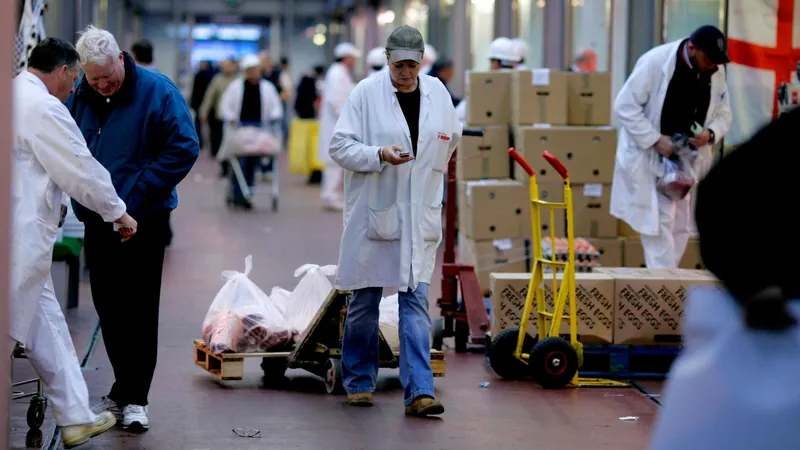
Farewell To Tradition: London's Historic Fish and Meat Markets to Close After 1,000 Years
2024-11-27
Author: Ting
LONDON — Historic Markets Closing
Two of London’s most iconic and historic markets, Billingsgate Fish Market and Smithfield Meat Market, are preparing to close their doors in the coming years, marking the end of a culinary tradition that stretches back over a millennium.
The City of London Corporation announced on Wednesday that it will be presenting a bill to Parliament aimed at relinquishing its responsibilities for the operation of these markets, both of which have roots dating back to the 11th century. In a surprising turn of events, the decision to not relocate the markets to a new development in Dagenham was made, primarily due to escalating costs exacerbated by recent inflation and increased construction expenses, projected to reach around £1 billion (approximately $1.25 billion).
As a new approach, the corporation has agreed to provide financial compensation and advisory support to market traders, allowing business owners until at least 2028 to determine their next steps. This pivotal decision, according to Chris Hayward, the policy chairman of the City of London Corporation, signifies 'a positive new chapter' where traders can pursue a sustainable future that aligns with their business ambitions.
Unique Culture of Smithfield
The culture surrounding Smithfield is unique, with traders commencing work at 10 p.m. to cater primarily to restaurants, wrapping up around 6 a.m. This bustling schedule led local pubs to acquire special licenses for early morning service, embodying a vibrant, albeit gritty, part of London’s nightlife.
Historical Significance
Historian Peter Ackroyd notes that Billingsgate’s history traces back to before the Norman Conquest led by William the Conqueror, while Smithfield evolved into a primary site for livestock trade shortly thereafter. Over the centuries, both markets have been integral to London's fabric, known not only for their goods but also for the rowdiness and societal boisterousness that characterized them.
The great writer Charles Dickens echoed this sentiment, portraying Smithfield as a place of 'filth and mire' in his renowned novels like 'Oliver Twist' and 'Great Expectations.'
Evolution and Renovation
Despite the evolution of food standards and modern rebuilding efforts that have transformed the markets from their squalid medieval origins, a significant renovation was on the horizon. Smithfield currently features Victorian-age architecture with historical modifications, having previously suffered a major fire in 1958. Meanwhile, Billingsgate has been situated in London Docklands since 1982, an area that has undergone dramatic redevelopment, now boasting the impressive skyscrapers of Canary Wharf.
Future Developments
Looking ahead, proposals are underway to develop much-needed housing on the Billingsgate site, with plans for approximately 4,000 new homes. Meanwhile, Smithfield is set to undergo a transformation into a cultural center, with ambitions to become home to the new London Museum, ensuring these historical sites remain vital components of the city, albeit in a new guise.
Conclusion: The Future of Culinary Culture
As we step into an era without these historic markets, the question looms: how will London adapt to the loss of these age-old traditions? The countdown begins—what's next for the future of our cherished culinary culture?





 Brasil (PT)
Brasil (PT)
 Canada (EN)
Canada (EN)
 Chile (ES)
Chile (ES)
 España (ES)
España (ES)
 France (FR)
France (FR)
 Hong Kong (EN)
Hong Kong (EN)
 Italia (IT)
Italia (IT)
 日本 (JA)
日本 (JA)
 Magyarország (HU)
Magyarország (HU)
 Norge (NO)
Norge (NO)
 Polska (PL)
Polska (PL)
 Schweiz (DE)
Schweiz (DE)
 Singapore (EN)
Singapore (EN)
 Sverige (SV)
Sverige (SV)
 Suomi (FI)
Suomi (FI)
 Türkiye (TR)
Türkiye (TR)